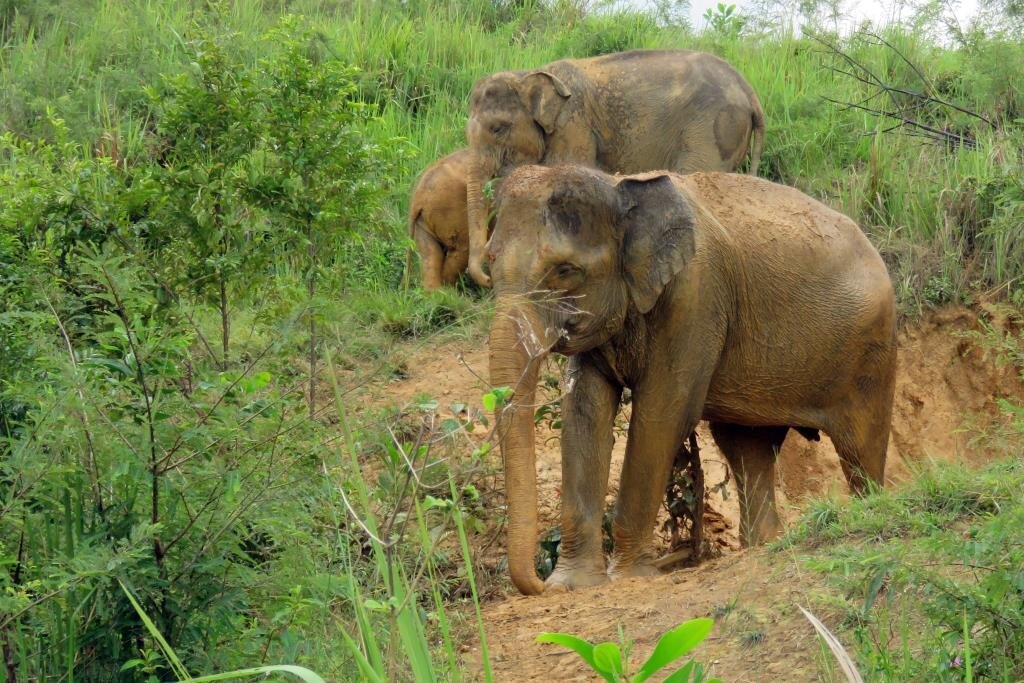
Welcome to the Sumatran Elephant Project
MISSION: we are dedicated to the protection and future conservation of the
Critically Endangered Sumatran Elephant and its remaining rainforest habitat.
Why are Sumatran Elephants important?
The Sumatran elephant a sub species of the Asian elephant and found only on the island of Sumatra, and no where else in the world. It is listed as Critically Endangered by the IUCN, which means this species faces a high risk of becoming extinct in the wild in the very near future. It is thought that less than 1,700 elephants remain on the entire island of Sumatra.
Elephants are the world's largest herbivore, and eat over 200 species of plants and fruit. They also travel long distances and defecate around 18 times a day! This makes them the worlds largest seed disperser and many plants rely on them for their seed dispersal. Without the elephant disappearing and spreading these seeds, many rainforest trees would die out. Rainforest's need elephants!

What we do
Population Surveys
Located at the most northerly tip of the island of Sumatra lies the Leuser and Ulu Masen forest ecosystems. This 3.3-million-hectare area is one of the last intact primary rainforests still remaining in southeast Asia, and is of global significance for its high level of biodiversity. It is believed that these rainforests contain one of the largest remaining populations of Sumatran elephants, although accurate estimates are still unknown. Part of our research will focus on providing an accurate population estimate of the Sumatran elephant in this, their most northerly range.
Human Elephant Conflict
Human Elephant Conflict (HEC) is defined as “any human elephant interaction which results in negative effects on human social, economic or cultural life, AND/OR on elephant conservation and the environment”. HEC is a huge problem in all elephant range countries, and is a serious threat to the Sumatran elephant. To address the problems of HEC it is vital to obtain information on where and when this is happening, the severity of HEC and local attitudes towards elephants.
Captive Elephant Welfare
There are approximately 700 captive elephants in Sumatra located in a number of facilities called ‘conservation response units’ (CRU’s), or at local tourist attractions. No elephant management strategy exists in Indonesia, and appropriate care is not monitored in any of these captive locations. This project will undertake welfare assessments through behaviour at all CRU facilities across Sumatra. It is hoped to then develop a management protocol that can be established at these locations, ensuring high welfare standards and improved management in all captive Sumatran elephant populations.

